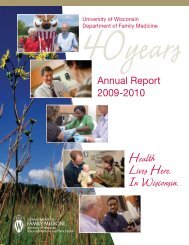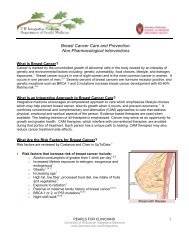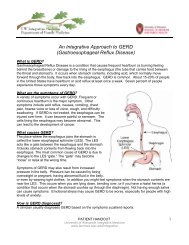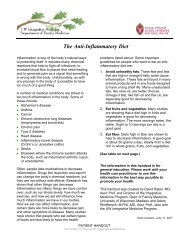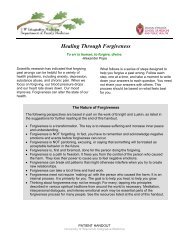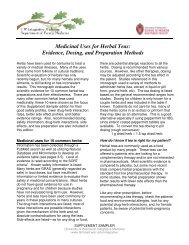Mental Notes Magazine - UW Family Medicine - University of ...
Mental Notes Magazine - UW Family Medicine - University of ...
Mental Notes Magazine - UW Family Medicine - University of ...
Create successful ePaper yourself
Turn your PDF publications into a flip-book with our unique Google optimized e-Paper software.
Dream and Emotion Regulation<br />
K. Catherine Duclos, BA, MSc candidate 1,2<br />
Martin Desseilles, MD, MSc, PhD 2,3<br />
1 Département de psychiatrie, Université de Montréal, Canada<br />
2 Center for Advanced Research in Sleep <strong>Medicine</strong>, Hôpital du Sacré-Coeur de Montréal, Canada<br />
3 Centre de Recherches du Cyclotron, Université de Liège, Belgique<br />
Think <strong>of</strong> the dream as a means<br />
to evacuate an accumulated<br />
emotional pressure and to<br />
restore an emotional balance<br />
The dream experience is highly emotional when compared to “real life,”<br />
and is marked by negative emotions such as fear and anxiety<br />
It happens to every one <strong>of</strong> us: to wake up feeling<br />
a range <strong>of</strong> emotions, from anger or suspicion to<br />
exuberance, and to have these emotions then impact<br />
the rest <strong>of</strong> our day. Why does it seem like a dream<br />
can affect our mood before we even step out <strong>of</strong> bed<br />
Despite the clinical observations establishing a link<br />
between sleep and mood in various psychiatric and<br />
neurological disorders, the impact <strong>of</strong> dreams on the<br />
regulation <strong>of</strong> emotions has not yet been widely studied.<br />
Sleep can be divided into two general states: rapid<br />
eye movement (REM) and non-rapid eye movement<br />
(NREM) sleep. REM sleep follows NREM sleep and<br />
arises regularly at the end <strong>of</strong> each 70 to 90-minute<br />
sleep cycle in the course <strong>of</strong> one night. As the night<br />
advances, periods <strong>of</strong> REM sleep become longer, while<br />
NREM periods become shorter. REM sleep seems to<br />
be a neurophysiological state that facilitates dreaming,<br />
although dreams can occur in NREM sleep, most <strong>of</strong>ten<br />
as thought-like mentations, which take the form <strong>of</strong><br />
thoughts or brief and unstructured combinations <strong>of</strong><br />
disparate dream elements without a storyline, quite<br />
dissimilar to the vivid dreams encountered in REM sleep.<br />
Since dream reports are most vivid and elaborate after<br />
awakenings from REM sleep, current knowledge <strong>of</strong><br />
cerebral functioning during dream derives mainly from<br />
studies <strong>of</strong> REM sleep.<br />
Dreaming is characterised by internally-generated<br />
sensory, cognitive and emotional experiences. The dream<br />
experience is highly emotional when compared to “real<br />
life,” and is generally marked by negative emotions such<br />
Summer 2012 / <strong>Mental</strong> <strong>Notes</strong> / 17






